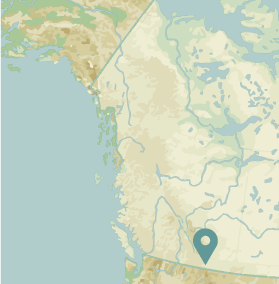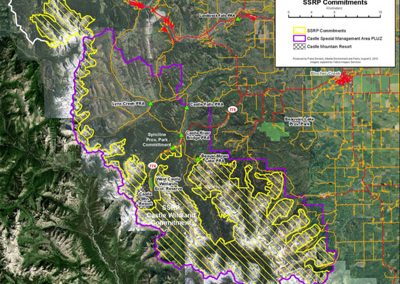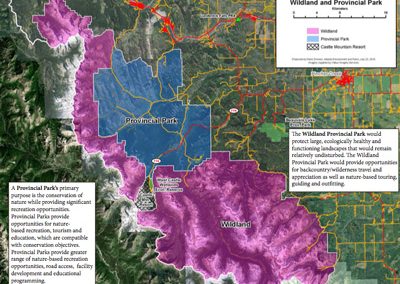With remarkable scenic vistas and unique ecological value, the Castle Wilderness is an essential part of the Rocky Mountains. The Castle is located in southwestern Alberta, on public land west of Pincher Creek and in between Crowsnest Pass and Waterton Lakes National Park. It includes over 1,000 square kilometres of mountains, grasslands, rivers, lakes and forest.
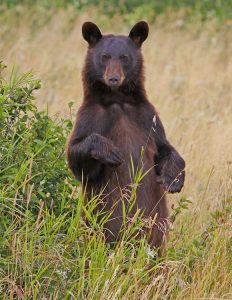
Ecological values
The Castle Wilderness is home to a large number of species. In fact, only Waterton Lakes National Park has more species of plants and animals than the Castle. The exceptional variety of biodiversity makes the Castle Wilderness a special home for many plants and animals, including rare species and those at risk of extinction.
As a natural extension to Waterton Lakes National Park, the Castle Wilderness is an important link for wildlife corridors. Along with Waterton Lakes National Park, this region has the highest density of biodiversity in all of Alberta.
Crown of the Continent
Extending into British Columbia and Montana is the unique ecosystem called the Crown of the Continent. With around 44,000 square kilometres of mountain landscapes, this ecosystem is essential habitat for a variety of wildlife. The Castle Wilderness is an integral part of the Crown of the Continent, and it is a vital connection for animals including grizzly bears, elk, moose and wolves.
Yellowstone to Yukon
The Castle Wilderness carries international importance as part of the Yellowstone to Yukon conservation corridor. This initiative seeks to protect the Rocky Mountain wilderness, all the way from the Yukon to Idaho. With ten major river systems, these montane ecosystems supply water for humans and wildlife throughout North America. Animal habitats are not restricted by political borders and Yellowstone to Yukon strives to preserve this essential wildlife corridor. Over 160 organizations in Canada and the United States – including the CCWC – are contributing to protect 1.2 million square kilometres.
Water for wildlife and humans
With one of the highest precipitation rates in southern Alberta, the Castle Wilderness supports watersheds throughout southern Alberta. The headwaters are part of the Oldman River ecosystem and support wildlife in the grasslands downstream, in addition to water for agriculture and municipalities in Alberta and Saskatchewan.
Explore the landscapes, animals and plants that make the Castle Wilderness special.
Spiritual values
The Castle offers a spiritual relationship with nature for everyone. For centuries, the Castle Wilderness has been a special place for Piikani (Peigan), Ktunaxa (Kootaney) and Nakota (Stoney) First Nations. The Castle Wildness is known to the Peigan people as A’saani, meaning sacred plant. Just as a plant offers sustenance and beauty, so does the Castle.
Recreational values
The Castle has exceptional beauty with relatively easy access. Hiking, wildlife viewing, photography, fishing, horseback riding, backpacking, cross-country skiing and snowshoeing all offer scenic vistas in exceptional wilderness. Sensitive use of the Castle Wilderness will give visitors unparalleled memories and experiences for generations to come.
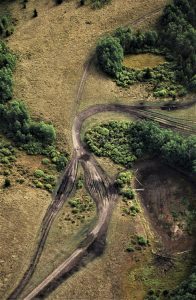 Threats to the Castle Wilderness
Threats to the Castle Wilderness
Human activities and development have caused disturbances within the Castle Wilderness. Some main threats to this precious region have included:
- Industry and development
- Logging
- Off-road vehicles
- Recreation and resort development
- Expanded road access
As land use policies change, the CCWC will continue to promote the ongoing protection, restoration and maintain of the Castle Wilderness as a viable and thriving wilderness within the Crown of the Continent ecosystem.

